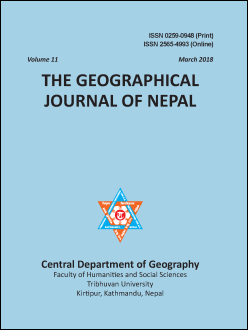Polycentric Settlement as A Sustainable Development Strategy: A Case of Baglung District, Nepal
DOI:
https://doi.org/10.3126/gjn.v11i0.19554Keywords:
Polycentric centers, Spatial development, Territorial development, Social cohesion, Baglung districtAbstract
This paper is an analysis of potential settlement locations for polycentric centers and their expected role in socio-cultural, economic, environment and transport network as well as spatial development in the Baglung district. Using multi criteria evaluation analysis approach and analytical hierarchy process (AHP) numbers of polycentric settlement centers were identified as the potential centers for socio-economic development at the district level. The empirical findings indicate the polycentric settlement centers not only promote economies and facilitate social integration but also generate a disproportionate number of trips and promote transit ridership. It also helps to strengthen forward and backward linkages between hinterland and service providing center. A balanced and sustainable polycentric development model has been proposed for overall sustainable development through development of polycentric settlement.
The Geographical Journal of Nepal
Vol. 11: 137-155, 2018
Downloads
Downloads
Published
How to Cite
Issue
Section
License
© Authors




